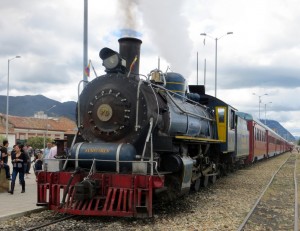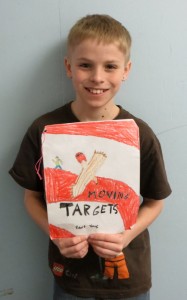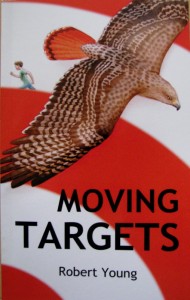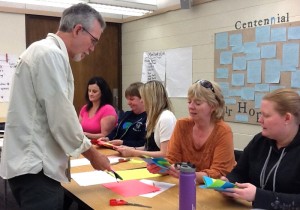The steam engine transformed transportation in the United States. Locomotives using this innovative engine were introduced in this country during the 1830s and made it possible to move large amounts of people and goods effectively. Horses, which had previously done the job, became out-dated. So, too, would the steam locomotive after the turn of the century when first electric and then diesel locomotives were developed.
I carried these tidbits of history with me as I boarded the Turistren in Bogota, Colombia for a Sunday outing to a salt mine in Nemocon, a town to the north. The locomotive and fourteen cars had the classic styling of the 19th century trains that coursed their way across the growing U.S. Colorful passenger cars with rounded roofs and lined with windows. Massive locomotives complete with powerful driving wheels, cowcatchers and brass bells.
As our train gathered steam and made its way out of the Sabana Station, we were soon transported to another time, a simpler time when travel took longer and people didn’t even mind. The mood inside the car was festive, with excited talk and laughter interrupted by the pulsing beat and rich melodies of the musicians who drifted from car to car.
But it was outside the windows that drew my attention, not to the sights of the city or the rolling green hills of the countryside, but to the people who stood, transfixed, as the train passed. Young and old, male and females, car passengers, bicyclists, people walking their dogs or viewing from their balconies. Some people waved, some just watched, but all were interested in the procession as it passed.
So were the animals. Dogs tipped their heads and barked, horses looked up from their grazing, cows trotted, and chickens flew at the sight of the train and the sound of its whistle.
The way the train engaged the spectators interested me. Here was this old-fashioned, out-dated mode of travel, and people couldn’t take their eyes off it. Nor could the animals. They were all truly engaged.
Which, of course, made me think about teaching and learning. Engagement is the key to both of them. You can’t teach anything unless you first engage the learners. The same goes with learning: you can’t do it unless you are engaged.
Now think about your classroom for a moment. Are your students engaged? What is it you do to engage them?
There are many ways to engage learners, some old, like movement and music, and some new, like wikis and blogs and smartboards. Are some better than others? Sure. And even the best of them aren’t effective for all the students. That’s the challenge of teaching: finding ways to engage all students.
New methods of engagement are coming out all the time. Teachers are inundated with them. I hope you will try the ones that make sense for you and your students. But I also hope you will use the old ones, too, the ones that have been around and that you have found to be helpful in engaging students.
Just remember the steam trains: old and out-dated, but still with the power to engage.






